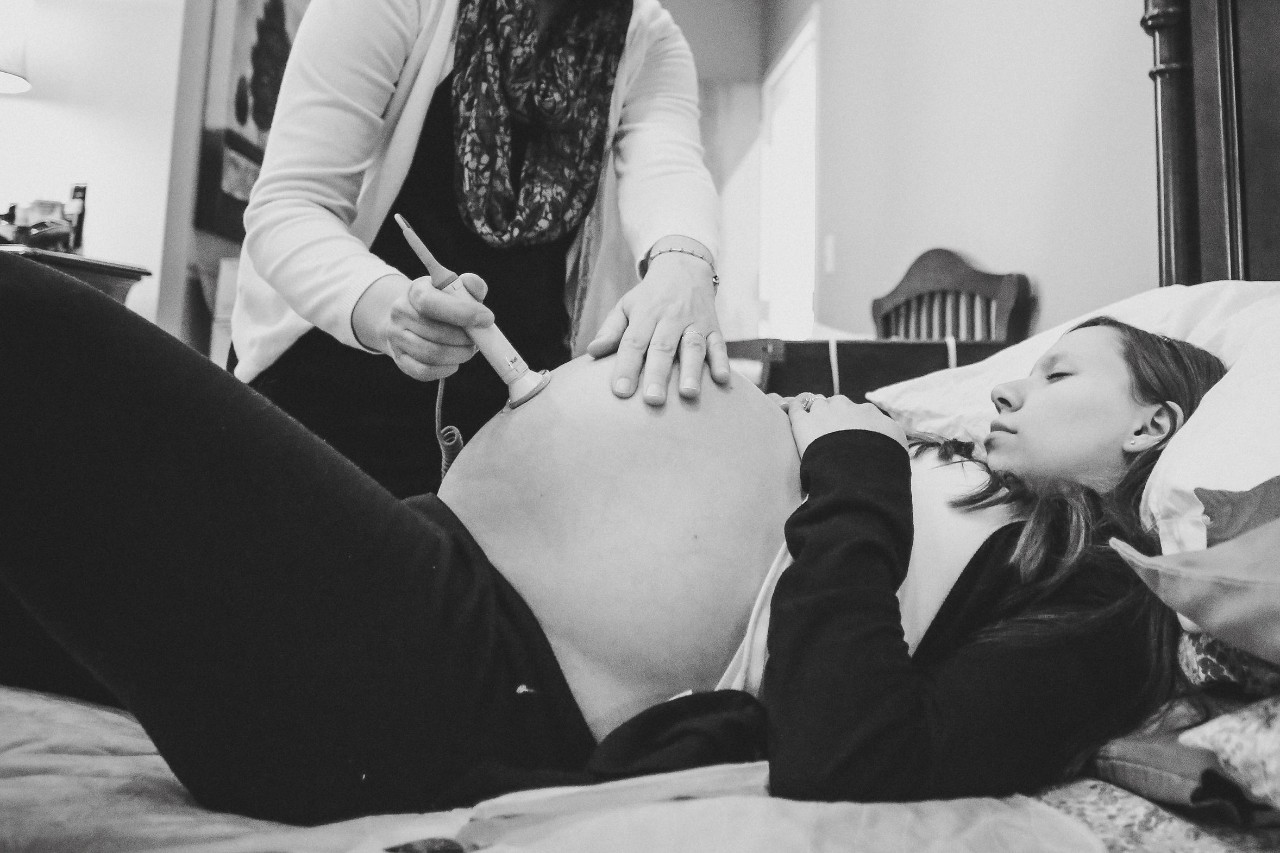December 29, 2017
The Midwife Difference

As a pregnant teenager at 16 and 19, I simply followed what was common around me in my prenatal care. I used my step-mom's same OBGYNs and delivered at the same hospital. I was induced with Pitocin and had an epidural. From a medical standpoint, all went smoothly. I was healthy, baby was healthy, but I left my second child's birth feeling off. I felt gipped, actually. I had let someone else dictate every move, when to push, when to breastfeed. I suddenly felt a desire to own my experience and be the one in charge. I wanted to own this powerful gift of birthing a baby with my intuition and wanted a provider who believed in my body and baby's abilities.
What is the midwife difference, you ask? Simply put it is a different approach to care and the belief that our bodies are smart! Now, there are different types of midwives ranging from Certified Nurse Midwives to Certified Professional Midwives (CPM) and Lay Midwives. I used a CPM. Here is what I found to be the key differences of my midwife experiences.
YOU MIGHT ALSO LIKE: When Your Partner Can’t Be at the Birth
Direct contact 24/7
If I had any issues — big or small — I could call, text, or email her directly anytime I needed. I remember calling her worrying that my baby hadn't moved in a while and she instructed me to drink a sweet drink like juice and lay down to do a kick count (it worked). Or, when labor finally kicked in I kept her updated and asked questions via text until I was ready for her to arrive. It was good to know she was reachable any time.
One provider
Unlike my previous pregnancies where I made my rounds between doctors to visit them all in case they were the ones on call when I arrived at the hospital in labor — my midwife was my one and only. Well, there was an assistant midwife who would join our visits occasionally and for my birthing day, and I was required to see outside care a few times each pregnancy, but my midwife otherwise was my sole provider. There was comfort in knowing exactly who will be at every appointment and who would attend my birth. And, when I was in labor, she didn't leave! No popping in and out of the room in between visiting patients to check on me. She was a presence nearby silently observing and ready for the big moment.
Longer, more attentive visits
Instead of waiting in the lobby for 30 minutes, then waiting more in the small prenatal room, I walked straight in to my appointment. What is even more amazing is that we spent a solid 30 minutes just talking! There was no feeling of rushing off to the next patient, and our visit wasn't just about how the baby was developing, but also my physical and emotional health. We talked about our families, my worries, my vision for birth, my diet, water intake, and supplements. It was far more in depth and personal. I wasn't just a chart number, but a person.
You become friends
Because she was my main provider and we spent every visit together up through 6 weeks postpartum — and now especially having the last 6 years together among 3 babies — she has become a family friend to us. She has a special place in all our hearts.
YOU MIGHT ALSO LIKE: 10 Reasons Why I Love Giving Birth Without Medication
You make the decisions
I honestly was shocked at the amount of choices I had switching to a midwife's care from an OBGYN. Instead of being told, “This is what we are going to do” I was encouraged to research my options for specific interventions, and she weighed in with her advice and scientific research. She often offered natural solutions to issues that arose. The choices ultimately were in my hand, which was both terrifying and exciting! The same is true with what I desired out of birth. We talked about all the choices I had, and it was empowering to take part in my own care with her guidance.
The atmosphere
As I said, there are different kinds of midwives, and they can operate out of different locations ranging from home, birth centers, or the hospital, depending on the state and their requirements. My CPM worked at a freestanding birth center for both her center clients and home births. I used her to deliver in both places, but regardless of where I gave birth I still felt at home during prenatal visits. The atmosphere there was so different than the typical office, it was filled with personal touches of art. The prenatal rooms had real twin beds and comfortable, homey chairs to sit in. The birthing rooms were all painted relaxing hues, held colorful queen size beds, beautiful furniture you would see in your own master bedroom, large tubs, and curtains to soften the space. It was definitely a home away from home, even for quick prenatal visits.
Labor and delivery
This is where I feel the difference is really seen in a midwife's care. She has an underlying trust in the woman's body and baby to do what it is made to do and typically only steps in when needed. I had say in my position, whether in the tub, walking, or using the birthing ball by the bed. I did not have an IV and was encouraged to eat and drink throughout labor to keep hydrated and keep up my energy. I could have essential oils diffusing nearby. And, I could have as many people as I wanted in the room! Not that I wanted many, but having been limited in the past it was nice to not have to force someone out because of a policy.
During the pushing phase, I could push in whatever position felt comfortable to me. There was no dramatic cuing of “it is time to push” based on dilation, but instead I told her when my body cued me and the baby was coming. There was no “push push push!” with each contraction. It was a silent trust in my body doing its job, hands ready to catch, and letting my uterus push itself in its own time to prevent tearing. She only intervened when needed.
When things do happen
I delivered one child standing up. That was because his cord was wrapped four times around his neck. Four! So, when it appeared he was getting stuck, my midwife encouraged me to stand up to push and let gravity help. That did the trick! After that birth I also bled out more than necessary and nearly passed out, she quickly acted with a shot of Pitocin to slow the bleeding. My last birth, my daughter came out not breathing. She again, with her assistant, worked quickly to breathe into her lungs and get her thriving. Midwives are trained to encounter situations that may arise, as well as look for signs of issues before they happen so the call of a transfer can take place when needed.
After birth
All ofmy babies were immediately passed to me after birth and stayed there for at least an hour before we were ready to weigh them. We chose to do delayed cord clamping so our babies stayed attached to their placenta until the cord was white, meaning they were able to use that last boost of nutrients. There was no rough rubbing to wipe off vernix, or rush to take baby's first bath, it was a very quiet and gentle time. Those first hours after birth are some of my fondest, those skin-to-skin bonding moments in time to encourage breastfeeding and getting to know our new little one. My midwife was still there observing and chatting for hours after birth until all was cleaned up and she was satisfied everyone was healthy. She also came to my home within a few days to check on how I was healing, give a RhoGAM if needed, and do the newborn screening. How nice to do all that from the comfort of my bed!
Now being pregnant with my husband and my fifth baby, I am excited to see my midwife again in a few weeks for our first prenatal appointment! We plan for another home birth in February 2017.


